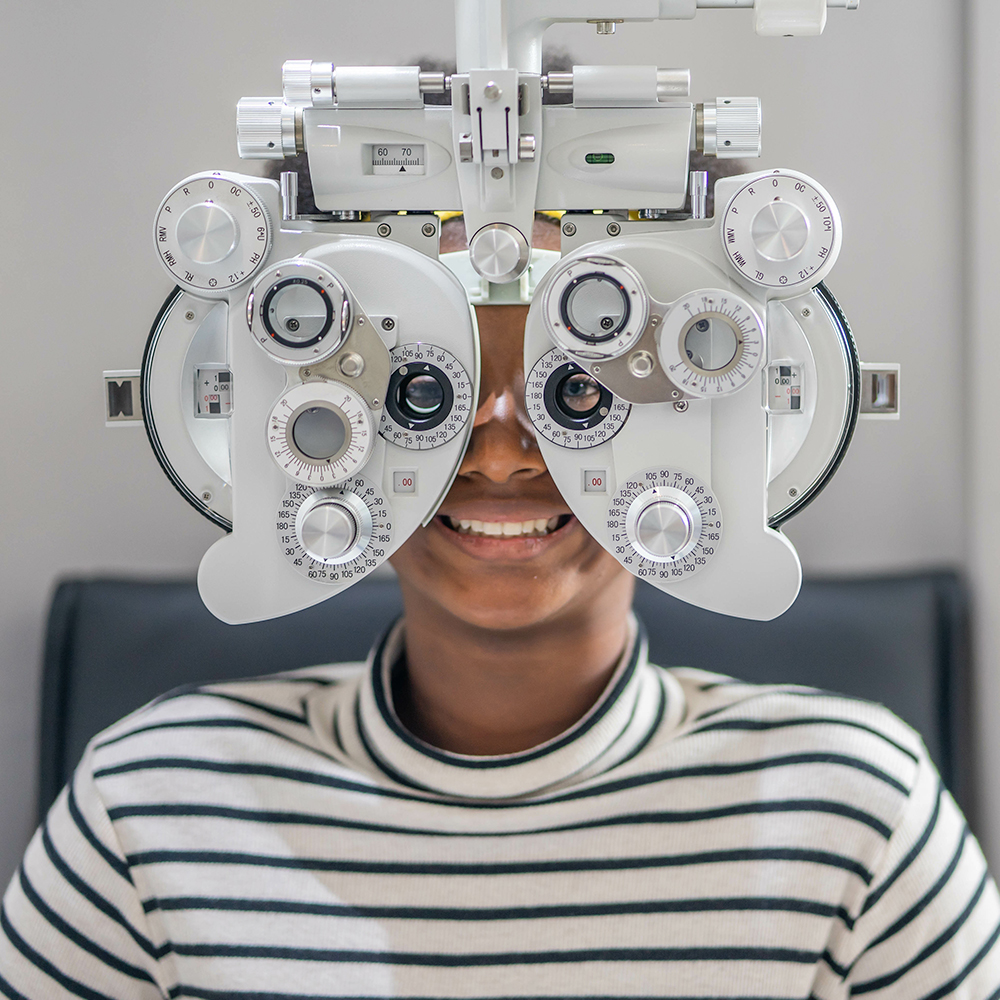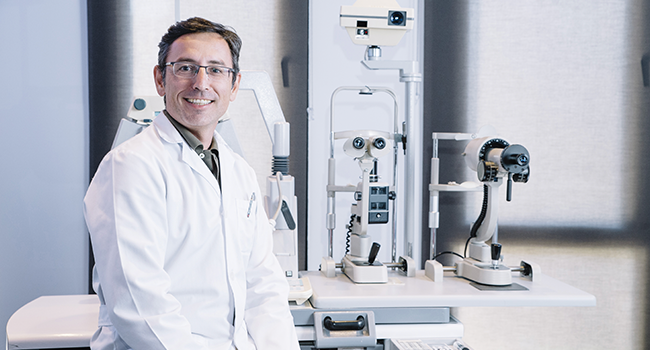Experience Personalized Care with Opticore Optometry in Chino
Experience Personalized Care with Opticore Optometry in Chino
Blog Article
Checking Out the most up to date Technological Developments in Optometry and What They Mean for Optometrists
In the ever-evolving area of optometry, current technological innovations are reshaping how experts come close to eye care. From the accuracy of Optical Coherence Tomography to the nuanced understandings provided by AI-driven analysis tools, these advancements are establishing new standards in patient evaluation and treatment. Teleoptometry is poised to redefine access, ensuring that proficiency goes beyond geographical limitations. As these innovations permeate the technique, optometrists are encountered with the challenge of embracing these devices to enhance individual outcomes. Yet, the inquiry remains: exactly how will these technical shifts redefine the functions and duties within the profession?
Advancements in Diagnostic Devices
Progressing the field of optometry, developments in analysis devices have actually changed the method eye care specialists analyze and identify ocular conditions and aesthetic impairments. The previous years has actually seen substantial technical advancements, allowing even more accurate and comprehensive evaluations. Optical Coherence Tomography (OCT), for instance, provides high-resolution cross-sectional photos of the retina, permitting for the very early discovery of diseases such as glaucoma and age-related macular degeneration. This non-invasive imaging technique has actually become essential in modern optometric technique.
Another key technology is the intro of advanced corneal topography systems, which map the surface area curvature of the cornea with accuracy. These tools are especially useful for suitable contact lenses and identifying corneal problems. Additionally, electronic retinal imaging has actually transformed standard ophthalmoscopy, offering comprehensive, scenic sights of the retina that assist in complete visual examinations.
The growth of wavefront aberrometry has actually additionally been crucial, enabling the analysis of refractive errors with unmatched accuracy (Eye Doctor Optometrist). This modern technology aids in customizing corrective lenses and enhancing surgical outcomes for refractive surgeries. Collectively, these diagnostic developments equip optometrists to deliver exceptional client care, guaranteeing early treatment and customized therapy approaches, ultimately improving visual health end results
AI in Patient Administration
Structure on the structure of advanced diagnostic devices, the unification of expert system (AI) in client administration represents a transformative jump for optometry. AI systems are significantly utilized to improve efficiency, accuracy, and customization in person care. By assessing large amounts of information, AI can recognize patterns and forecast possible eye conditions, enabling eye doctors to customize treatments better. This capacity is vital in managing persistent eye illness such as glaucoma and diabetic retinopathy, where early discovery and continuous surveillance are crucial.
Furthermore, AI-driven systems help with structured patient interactions and management processes. Automated organizing, digital examinations, and personalized follow-up strategies not only improve person satisfaction but additionally enhance time administration for professionals. These systems can triage people based on the seriousness of their problems, ensuring that those in important demand receive timely interest.
Moreover, AI improves decision-making by supplying eye doctors with evidence-based recommendations and treatment pathways. By integrating data from electronic health and wellness documents, AI devices offer insights that inform scientific choices, minimizing the threat of mistakes and boosting person outcomes. As AI remains to evolve, its role in patient management will likely increase, improving the landscape of optometric treatment.
Breakthroughs in Retinal Imaging
In the world of optometry, retinal imaging has actually experienced amazing technical innovations that are enhancing diagnostic capacities and patient treatment. Technologies such as Optical Coherence Tomography (OCT) and fundus digital photography have actually changed how optometrists assess the retina and imagine.
Enhanced imaging techniques like OCT angiography are more refining diagnostic accuracy. This non-invasive strategy maps blood circulation in the retina, supplying crucial insights right into vascular health and wellness without the need for dye shots. Furthermore, adaptive optics technology is being integrated right into retinal imaging systems to correct eye aberrations, delivering unmatched picture quality. Such developments promote the recognition of minute retinal modifications that can represent illness development.
In addition, advancements in expert system are augmenting retinal imaging by enabling automatic evaluation of huge datasets. These systems aid optometrists in identifying patterns a sign of pathology, thereby enhancing analysis precision and effectiveness. Jointly, these advancements are changing retinal imaging into a keystone of modern-day eye care, improving end results and expanding therapeutic possibilities.
Teleoptometry's Growing Role
Teleoptometry is progressively ending up being a crucial part of eye treatment, driven by developments in electronic interaction and diagnostic tools. This is particularly beneficial in underserved and rural locations where click this site access to specialized eye treatment is typically restricted.
The assimilation of expert system (AI) more enhances teleoptometry, allowing the analysis of aesthetic data and helping in the discovery of eye problems such as glaucoma and diabetic retinopathy. AI-powered algorithms can rapidly interpret intricate imaging information, giving optometrists with beneficial insights that bolster medical decision-making.
Furthermore, teleoptometry sustains continuity of treatment via smooth combination with electronic health documents (EHRs), allowing optometrists to keep detailed individual histories. When consulting with different professionals., this makes certain that people obtain tailored and constant treatment even.
Regardless of these advantages, obstacles remain, consisting of making sure data safety and handling individual assumptions. Teleoptometry stands for a substantial stride in the direction of more accessible, efficient, and patient-centered eye treatment. As technology evolves, its role is positioned to increase further.

Future Trends in Eye Care
A myriad of cutting-edge patterns is readied to reshape the future of eye treatment, driven by technological developments and the progressing requirements of clients. One significant trend is the integration of artificial intelligence (AI) in diagnostics, which promises to boost the precision and efficiency of eye evaluations. AI algorithms can assess huge quantities of data from retinal pictures, potentially discovering problems like diabetic retinopathy and glaucoma earlier than typical techniques.
Furthermore, tailored medicine is acquiring grip in optometry, with hereditary testing educating tailored treatment strategies. This method aims to optimize patient results by tailoring interventions to specific genetic profiles. Wearable innovation, such as smart call lenses, is likewise imminent, providing real-time monitoring of intraocular pressure or sugar degrees, hence supplying This Site continual insights into systemic and eye wellness.
The adoption of increased fact (AR) and online truth (VR) in training and patient education is another arising fad. These innovations provide immersive experiences that can enhance understanding and abilities both for optometrists and people. As these trends evolve, eye doctors should stay abreast of technological improvements to give cutting-edge treatment, ensuring better person end results and complete satisfaction in the vibrant landscape of eye treatment.
Conclusion

Jointly, these analysis improvements empower eye doctors to deliver premium individual care, ensuring early treatment and tailored therapy methods, eventually boosting visual health and wellness end results.

As these technologies proceed to advance, eye doctors need to adapt and include them into practice, eventually maximizing operations effectiveness and elevating the criterion of eye care delivered to individuals.
Report this page